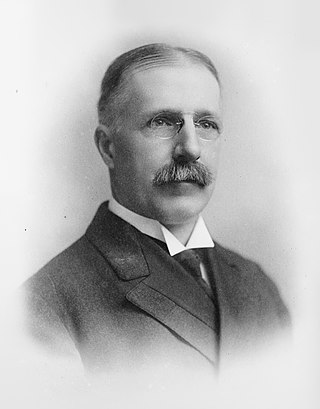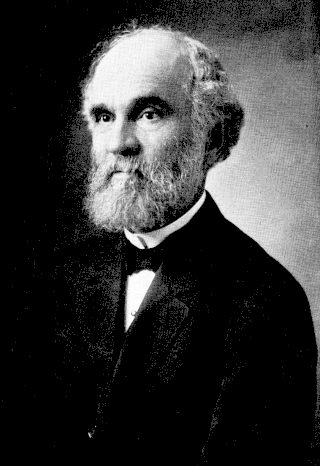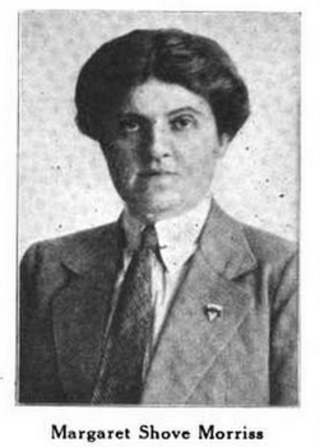Seal brown is a rich dark brown color, resembling the color of the dyed fur from the fur seal.

Pembroke College in Brown University was the coordinate women's college for Brown University in Providence, Rhode Island. It was founded in 1891 and merged into Brown in 1971.

The John Hay Library is the second oldest library on the campus of Brown University in Providence, Rhode Island, United States. It is located on Prospect Street opposite the Van Wickle Gates. After its construction in 1910, the Hay Library became the main library building on campus, replacing the building now known as Robinson Hall. Today, the John Hay Library is one of five individual libraries that make up the University Library. The Hay houses the University Library's rare books and manuscripts, the University Archives, and the Library's special collections.
Societas Domi Pacificae, colloquially known as The Pacifica House or SDP, is a secret society based at Brown University, in Providence, Rhode Island, and is the oldest student secret society in the United States. Organized in 1824 as The Franklin Society, it was created in a year when such a large class entered Brown University that the two existing literary debating societies, the Philermenian Society and the United Brothers Society could not accommodate the new students. Notable personages such as Thomas Jefferson, John Quincy Adams, and Henry Clay accepted honorary membership into the society during this time. The society was founded with the motto: Scientia Potentia Est, meaning “Knowledge is Power.”
Brown University traditions hold that two songs, "Alma Mater" and "Ever True to Brown", are sung at public events and gatherings related to the university. The traditional alma mater song, "Old Brown," was created in 1860 and "Ever True to Brown", the second school fight song, was written by Donald Jackson. The song is played by the Brown Band at major varsity athletic events and at formal events such as Convocation and Commencement. An unofficial version offers humorous alternative lyrics.

William Herbert Perry Faunce was an American Baptist clergyman and educator.
William Macdonald was an American historian and journalist.
Ray Lorenzo Heffner was an American educator and president of Brown University. He served in the United States Navy during World War II and graduated from Yale College in 1948, where he was elected to Phi Beta Kappa, the Elizabethan Club, and Scroll and Key. He earned his master's degree at Yale in 1950 and his Ph.D., also from Yale, in 1953 following the completion of a dissertation on the Elizabethan poet Michael Drayton.

The Brown Jug is a college humor magazine founded in 1920 at Brown University in Providence, Rhode Island.
Barnaby Conrad Keeney was president of Brown University from 1955 to 1966. He was known and loved by the student body for openness and his dry wit. As he once observed, "One of the joys of the life of an educator, particularly a president, is the amount of free advice he gets." Keeney then served as president of Claremont Graduate University from 1971 to 1976.
Gerald James Toomer is a historian of astronomy and mathematics who has written numerous books and papers on ancient Greek and medieval Islamic astronomy. In particular, he translated Ptolemy's Almagest into English.

Winslow Upton was an American astronomer. He published extensively on the subject of meteorology.
Walter Samuel Hunter contributed to psychology by leading an effort to develop psychology as a science. Hunter was one of the first scholars of the time to focus not on the study of subjective mental processes but rather on the observation of animal behavior. In 1912, Hunter completed his doctoral dissertation on Delayed Reaction in Animals and Children. He was a pioneer in the effort of scientific documentation, having created Psychological Abstracts in 1927, which contained documents from psychologists in the U.S. and abroad.
Henry Brayton Gardner was an American economist. He was a faculty member at Brown University from 1890 until 1928, serving as the first Eastman Professor of Political Economy from 1919 to 1928. In 1919, he served as president of the American Economic Association.

Margaret Shove Morriss was an American academic historian, She was the Dean of Women in charge of Pembroke College in Brown University from 1923 to 1950.
Martha Mitchell was an American librarian and archivist. She was the longtime archivist at Brown University and author of Encyclopedia Brunoniana, a reference work on Brown's history.
Rosalie Littell Colie (1924-1972) was a professor of comparative literature, a specialist in Renaissance English literature, and a poet.






